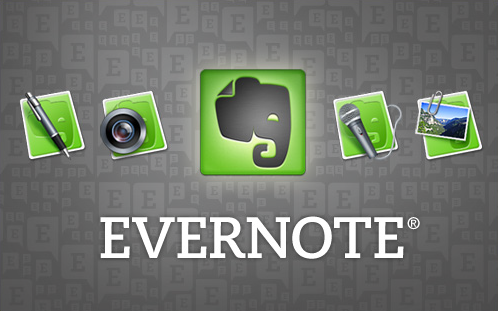
Notetaking apps are a great way to get organized and keep track of everything electronically. There are a lot of different ones out there, so I thought I would go through some of the more popular ones and list some of the features they have. Click on the links for more information on each one also.
1. Evernote - this is the note taking app that I use the most. It is free, available on all platforms (web, Mac, iOS, Windows, Android, webOS, and more), easy to use, full featured and high quality. You can organize your notes into different notebooks, tag each note, attach files to notes, and clip content from web pages with the browser extension. You can also share your notes with others. The iOS and Android apps are great. It can even search text in a photo. Evernote also integrates with other services and lets create notes through email and save your Livescribe pen notes to your notebook. Here are some Great Ideas for Using Evernote in Education.

2. SpringPad - this is another very good note taking app that I have used. Springpad is free, and is available via web app and for iPhone, iPad, and Android. Springpad allows you to create and organize tasks and notes. You can take notes, clip web sites, create task lists, and more, just like in Evernote, but you can also import data from a bar code, search by location, and add photos. You can organize things by notebooks and tags like in Evernote, but Springpad also has "The Board" which is a digital cork board to help you organize the important things.
3. Livescribe Smart Pen - These are electronic pens that record what you write, and hear, and then you can load this into your computer to keep a digital copy of your written notes and even share your notes with others. You can easily send your notes to Evernote, email, Google Docs and more. It's great to be able to take notes in math and science on paper, and then have them saved digitally. The ability to record audio that is synced with your written notes is also very useful. (full review here)
4. Word Processing software - you can also take notes using word processing software, such as MS Word, Google Docs, OpenOffice / LibreOffice, etc. You can take notes and use the outline format, insert symbols and tables, and much more. With Word and OpenOffice / LibreOffice, you have to have the file synced to the cloud somehow to be able to access the notes somewhere else. Dropbox and SugarSync are great file sync services to use to do this. Google Docs, on the other hand, is in the cloud, and therefore accessible from any web browser. You can also share Google Docs with others. Google Docs and OpenOffice/LibreOffice are all free, while Word is not. There are even templates for all of these for note taking. Here is a note template I created from my early days as an engineer.

5. OneNote - Microsoft OneNote is a note taking app that I had used a few years ago and just started looking at again. It is not free, but comes bundled with Microsoft Office (all versions) and is available for the iPad, iPhone, Windows Phone 7 and there is a web app. After asking around online and trying it out this week, I found that the organization is nice. You can create tabs in each notebook, just like a paper notebook would have. It is also very good for tablets, allowing you to use a stylus to capture handwritten notes. There are note templates available and you can share your notes to access on the web using SkyDrive.
6. TapNote - TapNote is a simple note taking app for the HP TouchPad and webOS SmartPhones. It is simple and uncluttered and the notes are automatically synced with your Dropbox account so that you can access them anywhere (they are saved as .txt files). It does have some great features for sharing and creating notes and you can try the lite version before purchasing.
7. Built in notes apps on smart phones - smart phones all have their own built in notes apps. Most don't sync to anything and are very plain text, but they are great for jotting down quick notes. They also have other simple note taking apps you can download. A good, simple note taking app for Android is Melon. You can quickly create notes, and organize them like sticky notes.
There are many more too. When choosing a note taking app, it comes down to features and personal preference. Select the one that works best for you, with your style and requirements.
What is your favorite note taking app?
